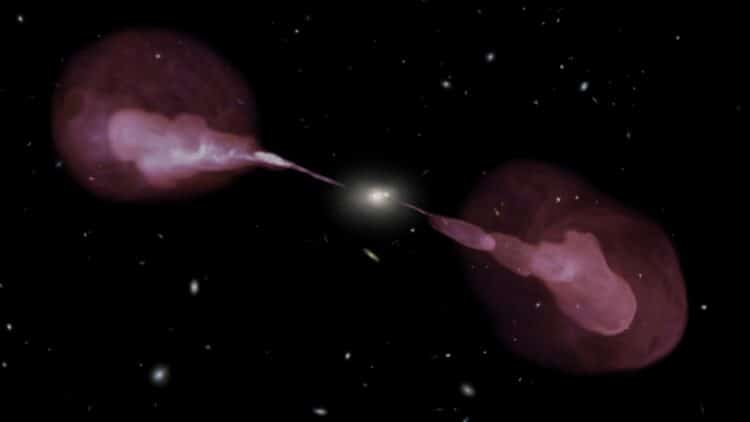We all know that the Universe holds millennia and millennia of mysteries for us, but that is starting to change… Through our increasingly advanced tools, we are managing to unravel some secrets out there. The most recent of these is this galactic fossil drifting through space. This structure, which is invisible to the human eye, seems to carry the memory of an ancient cosmic event, promising to change the way we understand the formation and evolution of galaxies and even rewrite part of modern astronomical history.
Another secret revealed in the Universe
To better understand this discovery, we need to remember that most galaxies harbor a supermassive black hole at their center. Some are even called active because they have bright, highly energetic cores, fueled by matter being consumed by the black hole. And, well, when this happens, not only is light emitted in large quantities, but particles are also thrown out at speeds close to that of light, creating jets of matter and intense galactic winds.
This is where the case of the galaxy NGC 4945 comes in. Thanks to the XMM-Newton (ESA) and Chandra (NASA) space telescopes, scientists at the Goddard Space Flight Center were able to map unexpected X-ray signals. Basically, it is a spiral galaxy about 13 million light-years away, located in the constellation Centaurus. It combines two rare phenomena:
- An active galactic nucleus.
- An intense formation of stars.
And what does all this mean? It is a galaxy amid a starburst. Experts estimate that it forms the equivalent of 18 stars like the Sun per year, three times more than our Milky Way. As if this discovery were not already shocking, this frenzy of star birth may be directly linked to extreme events that occurred in its past.
The power of our X-rays
By taking a closer look at NGC 4945 with XMM-Newton, scientists have detected a peculiar emission known as the iron K-alpha line. This line appears when high-energy X-rays, those coming from the accretion disk around the black hole, collide with cold gas elsewhere in the galaxy. Until now, this emission was thought to occur only near the galactic center, until something else turned up.
What we mean is that thanks to the galaxy’s almost sideways tilt to Earth, it was possible to map the iron line much further than expected; we are talking about 32,000 light-years along the galactic plane and 16,000 light-years vertically. Initially, researchers even ruled out other sources, such as binary stars or nearby star-forming regions. However, with the help of the Chandra observatory, they were able to eliminate these hypotheses and isolate the origin of the phenomenon: the central black hole of NGC 4945 (very different from this black hole in America that continues to grow).
Finally, the galactic fossil
The most curious thing was that it was only after this mapping that the team realized what was really before their eyes: a galactic fossil, formed by clouds of cold gas ejected 5 million years ago by a jet of very high-speed particles launched from the central black hole. This jet, instead of escaping vertically from the galaxy, was directed into the galactic disk, crossing its structure and dragging with it large masses of gas.
The movement even created a kind of energetic scar that is still visible today, a mark that still influences galactic winds and possibly fuels the current star formation process. What we are trying to say is: this recent NASA discovery is physical proof that black holes can actively shape the fate of their galaxies, influencing where and when new stars will be born or even if they will stop being born. That is why the question remains: Why do black holes never run out of fuel?


